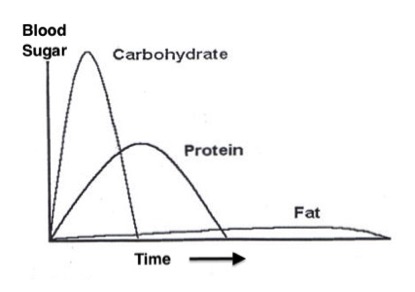What is it?
If you have followed health and wellness trends closely over the past year or so, you will have almost certainly come across the term “ketogenic diet”, or “keto” for short. Originally employed to reduce seizures in patients suffering from epilepsy, the diet has actually been around for over a hundred years, but only become popular over the course of the last few years.
The ketogenic diet promotes a high-fat, limited protein and low carbohydrate approach to food. In order to perform all our daily tasks, our body needs a consistent inflow of energy, which it can primarily get from two sources – sugar and fat. In the first case, our cells burn glucose as fuel, in the second they use ketones from fat. But what are ketones exactly?
Ketones are water-soluble molecules that are produced by the liver during times when food intake is low (or the amount of carbohydrates restricted) in order to provide the body with the energy it needs. During this process, the body switches from glucose to fat as its primary source of fuel, and from that moment on we are in the metabolic state of “ketosis”.
What are the benefits?
The ketogenic diet has received praise from doctors all over the world as studies have shown that it can help treat or at least lessen the symptoms of neurodegenerative diseases like Parkinson’s, Alzheimer’s and epilepsy. Yet the benefits don’t only apply to the sick; in fact, individuals without any existing medical conditions can also reap the benefits from switching to this high-fat diet.
If implemented correctly, the ketogenic diet is a powerful weapon to protect us from inflammation, high blood pressure, heart disease and diabetes. In our daily lives, we will most likely experience an increase in energy and mood, have fewer cravings and “brain-fog” and feel more balanced overall (the ketogenic diet balances our hormones and metabolism).

What are the risks?
While it is widely debated whether this particular way of eating should be applied long-term or is only maintainable for a restricted period of time, most medical professionals agree that the majority of people benefit from the diet rather than be at risk of its potential consequences, which can vary from one individual to another.
The most important thing you should know before switching to a very-low carbohydrate, high-fat diet is that due to the limited amount of carbs consumed (meaning vegetables, fruits and grains as well as legumes), the amount of prebiotics, vitamins and antioxidants, as well as fibre is also severely reduced. Fibre is the indigestible part of plants that we need to consume daily in order to retain a healthy digestive system.
Read here why our gut health is of major importance to our overall wellbeing.
As a consequence, we might feel constipated and unwell in the beginning, especially if coming from a high-fibre diet. Also, you might experience decreased energy from the lack of carbohydrates, especially during the transition phase. Often described as the “keto flu”, the first week or two can therefore be tough to manage as you might experience cramps, headaches or be more tired than usual.
What does the diet look like?
While exact percentages vary, roughly 80% of all calories should come from fat, 15% from protein and 5% from carbohydrates.
Foods that can be safely incorporated in larger amounts are animal fats such as eggs, grass-fed beef and wild-caught fish, and plant-based fats including avocados, coconut oil and raw nuts. In addition, dark leafy greens should become a staple – these are spinach, chard and kale for example. To satisfy any cravings, berries and nut butters are your best bet. Foods to avoid whenever possible are grains, soy products, refined oils, processed foods, artificial sweeteners and alcohol.

Roadmap to success
You have decided to give this diet a try? Before you start, we would like to make you aware of a few commonly made mistakes that might possibly hinder your long-term success:
- Eating too much protein – this can actually stop the body from going into ketosis, which is the overall goal of the diet
- Eating too many acidic foods – this will lead to chronic inflammation as toxic molecules cannot thrive in an alkaline state
- Not using the right kinds of fats (should always be high quality, whether animal or plant-based)
- Consuming too many calories – this will inevitably lead to weight gain in the long run
- Not sticking to the diet long enough. It is very easy to get out of ketosis, which is why you have to commit to at least a few weeks for the process to kick in and then stay under the recommended amount of carbohydrates
Share with us your story – how are you feeling on the ketogenic diet? What was your biggest challenge encountered? Would you recommend it to others?

